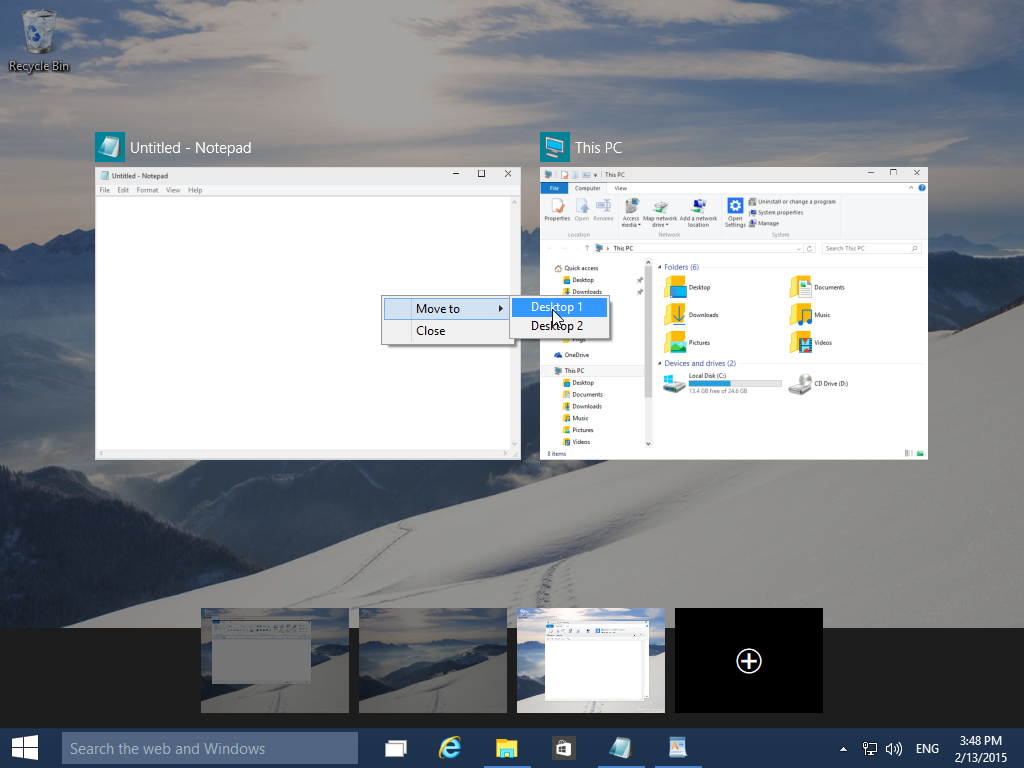

If you click the shortcut continuously, you’ll create multiple desktops. In order to create a new virtual desktop, use these steps:Ĭlick the Task View button in the Taskbar (or use the Windows key + Tab keyboard shortcut).Ĭlick New desktop in the bottom-right corner.Īlternatively, you can simply use the Windows key + Ctrl + D keyboard shortcut to create a new virtual desktop. On Windows 10, “virtual desktops” is actually part of Task View, which also includes a list of your running applications as well as a list of your Timeline activities. How to create a new virtual desktop on Windows 10 How to remove a virtual desktop on Windows 10.How to show an app on all virtual desktops on Windows 10.How to move an app to another virtual desktop on Windows 10.How to switch between virtual desktops on Windows 10.How to create a new virtual desktop on Windows 10.In this guide, you’ll learn the steps to create and manage virtual desktops on Windows 10. Linux and macOS had this feature for a long time, even Windows 3.x and Windows XP had this feature in one way or another, and now is coming back to the OS. Virtual desktops on Windows 10 is new, but the idea isn’t actually new. On Windows 10, the solution to this problem is “virtual desktops,” which is a feature that allows you to create additional desktops to overcome the limitations of a physical monitor. The ability to have multiple desktops is a powerful feature, as you can better organize and group your tasks, but it’s a problem when you only have one display.


 0 kommentar(er)
0 kommentar(er)
